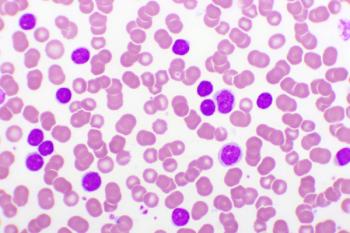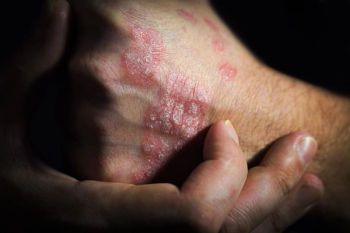
10-Year Babytam Data Show Reduced-Dose Tamoxifen Still Producing Positive Results
Babytam is the 5-mg daily dose of tamoxifen being studied in the ongoing TAM-01 study, which is investigating incidence of invasive breast cancer or ductal carcinoma in situ among high-risk women who have received the treatment regimen for 3 years.
Ten-year results from the TAM-01 study, evaluating 5-mg daily tamoxifen (or babytam), were presented today at the
Tamoxifen, a selective estrogen receptor modulator, was first approved
Five-year data presented at SABCS in 2018 showed the trial regimen to have reduced by 52% overall (22 events with tamoxifen, 37 with placebo) the recurrence of invasive breast cancer or DCIS (HR, 0.48; 95% CI, 0.26-0.92) vs placebo. Among women with contralateral breast cancer, this reduction was even greater: 76% (HR, 0.24; 95% CI, 0.07-0.87). Further, those in the treatment arm were shown to have only 1 additional hot flash per day vs placebo. After these data were announced in 2018, the National Comprehensive Cancer Network began to recommend babytam after DCIS in a patient is symptomatic or unwilling/unable to take the full dose, DeCensi noted.
“In the present study, we update the findings on breast cancer recurrence after a median of 9.14 years (IQR, 7.16-10.73) and a total of 10.57 person years of follow up to see if the treatment effect is retained,” DeCensi said, “with more events and after a median of approximately 6 years from treatment cessation. The follow-up was updated with the most recent visit within 12 months in two-thirds of the participants.”
The newest analysis is based on a median of 9.7 (range, 8.3-10.9) years of data.
Overall, these 10-year data show babytam continuing to reduce incidence of invasive breast cancer or DCIS. There was a 42% reduction in the primary end point (HR, 0.58; 95% CI, 0.35-0.95), with the survival curves remaining noticeably separated at 10 years, favoring babytam in cumulative breast cancer incidence rate.
Ipsilateral breast events were reduced 32% (HR, 0.68; 95% CI, 0.36-1.28) and contralateral breast events, 64% (HR, 0.36; 95% CI, 0.14-0.92). Further, a subgroup analysis that considered menopausal status, estradiol levels, incidence of hot flashes, body mass index (BMI), smoking habit, type of surgery, history of radiotherapy, and histologic subtype found statistically significant differences in several of those measures:
- 57% reduced risk among postmenopausal women (HR, 0.43; 95% CI, 0.20-0.91)
- 62% reduced risk among women with an estradiol level of at least 15.8 pg/mL (HR, 0.38; 95% CI, 0.16-0.92)
- 74% reduced risk in those with a BMI of 30 kg/m2 or higher (HR, 0.26; 95% CI, 0.07-0.97)
- 52% reduced risk in patients who never smoked (HR, 0.48; 95% CI, 0.26-0.91)
- 80% reduced risk with history of mastectomy (HR, 0.290; 95% CI, 0.04-0.97)
- 51% reduced risk among those with DCIS (HR, 0.49; 95% CI, 0.27-0.89)
For analysis of breast neoplastic events by arm, patients in the placebo arm had higher incidences of invasive disease (30 vs 21); ipsilateral and contralateral recurrence (39 vs 22); tumors at stages Tis, T1, and T 2-4 (50 vs 21); node-negative and -positive disease (38 vs 23); and luminal, human epidermal growth factor receptor 2–positive, or triple-negative disease (37 vs 21). However, the adverse events evaluated, which included coronary heart disease, bone fracture, cataract, and deep vein thrombosis or pulmonary embolism, did not differ significantly between the study arms.
DeCensi noted several limitations to these updated TAM-01 findings. There was limited power for subgroup analysis and interactions, lack of a vis-à-vis comparison with tamoxifen 20 mg/d, and lack of availability of the 5-mg tablet. For the latter, DeCensi said that “using 10 mg on alternate days is reasonable due to its long half-life.”
What are the clinical and research implications for patients? There is a reduction of breast cancer in high-risk patients with a new potential standard of care for DCIS, and DeCensi noted that the effect on contralateral breast cancer shows potential for reopening the door to prevention in DCIS and high-risk women. Babytam also has potential as an alternative to treatment cessation in patients intolerant to the 20-mg daily dose, to reduce interval cancers in premenopausal women with dense breasts, to reasonbly reduce risk in young women following chest radiation, and to be effective in women with BRCA2 or who are moderate penetrance gene carries (PALB2, CHEK2, ATM).
He concluded that babytam 5 mg daily for 3 years lowers recurrence from noninvasive breast cancer at 10 years, with carryover effect and without significant adverse events; opens a door for primary prevention in contralateral cancer; and has a low risk of death (0.6% at 10 years), supporting treatment de-escalation in DCIS.
Reference
De Censi A, Lazzeroni M, Puntoni M, et al. 10-year results of a phase 3 trial of low-dose tamoxifen in non-invasive breast cancer. Presented at: SABCS; December 6-10, 2022; San Antonio, Texas. Abstract GS4-08.
Newsletter
Stay ahead of policy, cost, and value—subscribe to AJMC for expert insights at the intersection of clinical care and health economics.









































